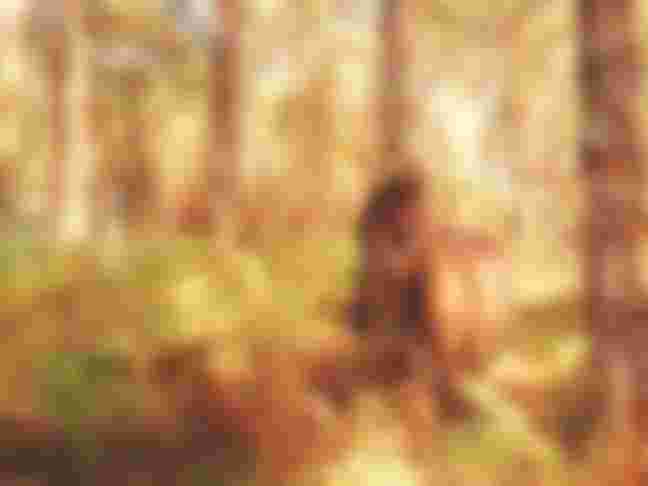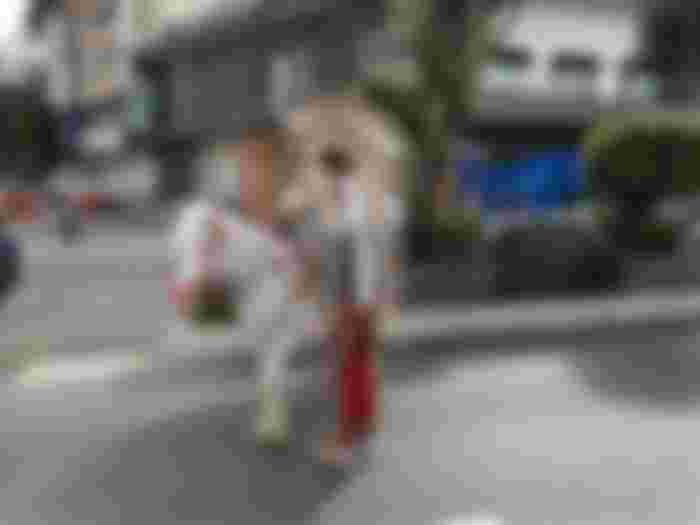Let's talk horsey, shall we?
"Hiya" is a derivative from the word "heeyah" like what the cowboys used. "Tigidig tigidig" is the sound we refer to the a galloping horse. Our version of clippety-clop.
"Kabayo" is the Filipino word for horse. "Kabalyo" is our term for it from the Spanish word "caballo."
"Kuboy" is how we call the rider of a horse, a derivative from cowboy. It is also our term for someone who is not picky or choosy, someone who is always game.
The Cordillerans have been greatly influenced by the American cowboys and country songs. Thus, aside from horses, country music is the music of the Cordillerans.
Even in showbiz, some well known local celebrities have been referred to a horse.

Horses in the Baguio City were brought by those who conquered our country namely Japanese, Spanish and Americans. They were also said to have been brought by traders like the Chinese. It is safe to say then that Baguio horses have descended from these and also from Arab horses (read more here).
These conquerors most especially the Spanish uses horses for there were no roads then that led to our mountains. Thus, horses are the best choice for they are able to carry heavy loads of supplies to the steep trails leading up to the Cordilleras.

In pursuit of gold and other minerals, the Spanish paved the way to make trades and mine gold here in the Cordilleras.
For the Ibaloys, one of the natives of Benguet, it is their belief that these horses will take their soul to the spiritual world to the peak of Mt. Pulag, Luzon's highest mountain. I have not seen it yet but if a prominent Ibaloy dies, a horse is slaughtered. The spirit of the horse will then take that person's spirit to the up to mountain.
Today, these horses can be seen in Wright Park and Camp John Hay and also in the nearby town of La Trinidad (click the link to see related article). These horses are for rent. The owners of these horses especially those in Wright Park are called the Pony Boys. During city festivals, they join in parading their horses in town.

I don't know if you can see but the horse above has pink mane and tail (the tail covered by the tree). I don't find it attractive quite honestly but to each his own. It could be marketing strategy to attract more tourist to ride the horses with colored mane and tail.
I was asking a friend if he has stories about horses here in Baguio. According to him, his grandfather is one of the first owners of horses for hire in Burnham Park. He said that tourists would pay 2 cents and they can ride the horses for hours. 2 cents! I was amazed and surprised but then again the value of 2 cents is enough. I remember taking my niblings to Mines View Park and let them take photos with a horse there. We had to pay PHP50.00 per person for three different poses. If you want to put on the headdress, (see photo below) there's another fee. Before pandemic and during peak season, one horse owner/carer can earn up to PHP1,000.00 in one day and probably even more. Depending on how long you want to ride a horse, the fee can start from PHP250.00 and up. From 2 cents to PHP1000.00, that's a massive difference.

Another story my friend told me is which is his grandfather's favorite is an uncle of his who would have a drinking spree in town until the wee hours only to be brought back home secured at the back of his horse, drunk of course (not the horse, silly, but it's the uncle who was drunk).
It would be nice to hear more stories of old.
In Abanao Road, there is a monument of two horses that seem to drinking from a log. This is a reminder where of the watering hole where horses used to drink back in the old days.

The photo above was not mine. It was taken from the post of Baguiobostonterrier in noise. I have asked permission to post it here of course. I'm just waiting for her approval lol! jk (Her post in noise is not about horses but the man/woman sleeping in the middle, homeless people during pandemic.)
Don't mind the traffic. Focus on the horses in the middle. Yes, those are horses. I can see that there is a plaque there. I wonder what's written.
Last year, however, it was reported that 27 horses have died from Equine Infectious Anemia or EIA. According to the city veterinarian, this disease has no cure (read more). When pandemic hit, the Pony Boys lost their means of livelihood. The deaths of these horses have added to their suffering. This disease is not transmissible to humans thankfully. One owner accounted that some horses would just literally fall down to the ground already dead (read here). Since then, it is reported that vitamins and necessary medicines have been administered to the remaining horses. There is a concern for how well these horses are being taken care of especially when it comes to proper sanitation because of the death of horses. Others have speculated that the deaths were due to COVID but there is no truth in that.
During my walks in Wright Park, I have seen tourists riding horses. I'm glad to see that but I think they are only limited to ride within Wright Park. I hope soon everything will get back to normal so these horse owners can start getting back on their feet or should I say horses.

I may have grown up here in Baguio and Benguet, but I have not yet ridden a horse. Maybe one of these days. Strong as they, still, I feel like I would burden the horse with my weight.
In case someone needed this:


What do you call a horse in your local dialect? What is your horse story?









Great article - an interesting intersection of cultures, and I love how horses seem to very much be part of the social historical landscape. I had a horse growing up - a skewbald pinto, which is brown and white. She was called Bayleaf and I used to ride her bareback down to the beach.